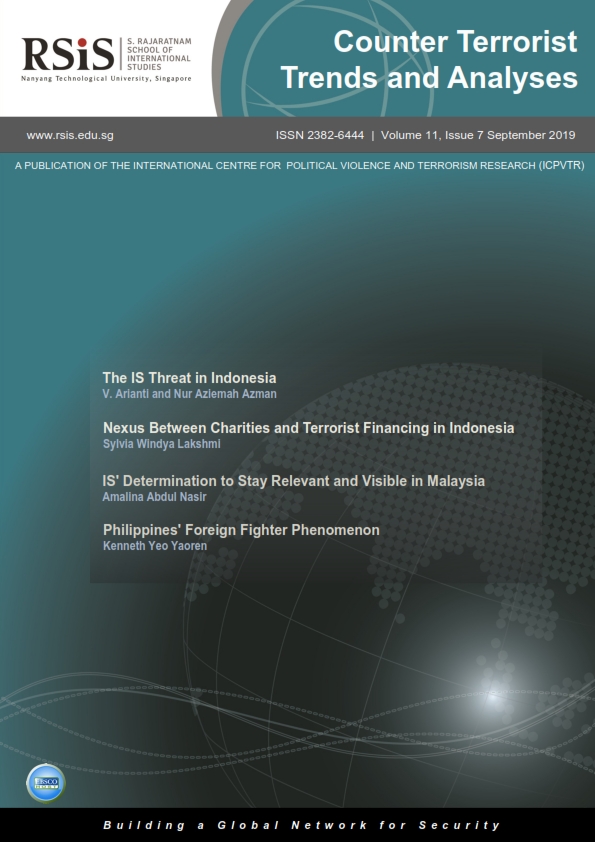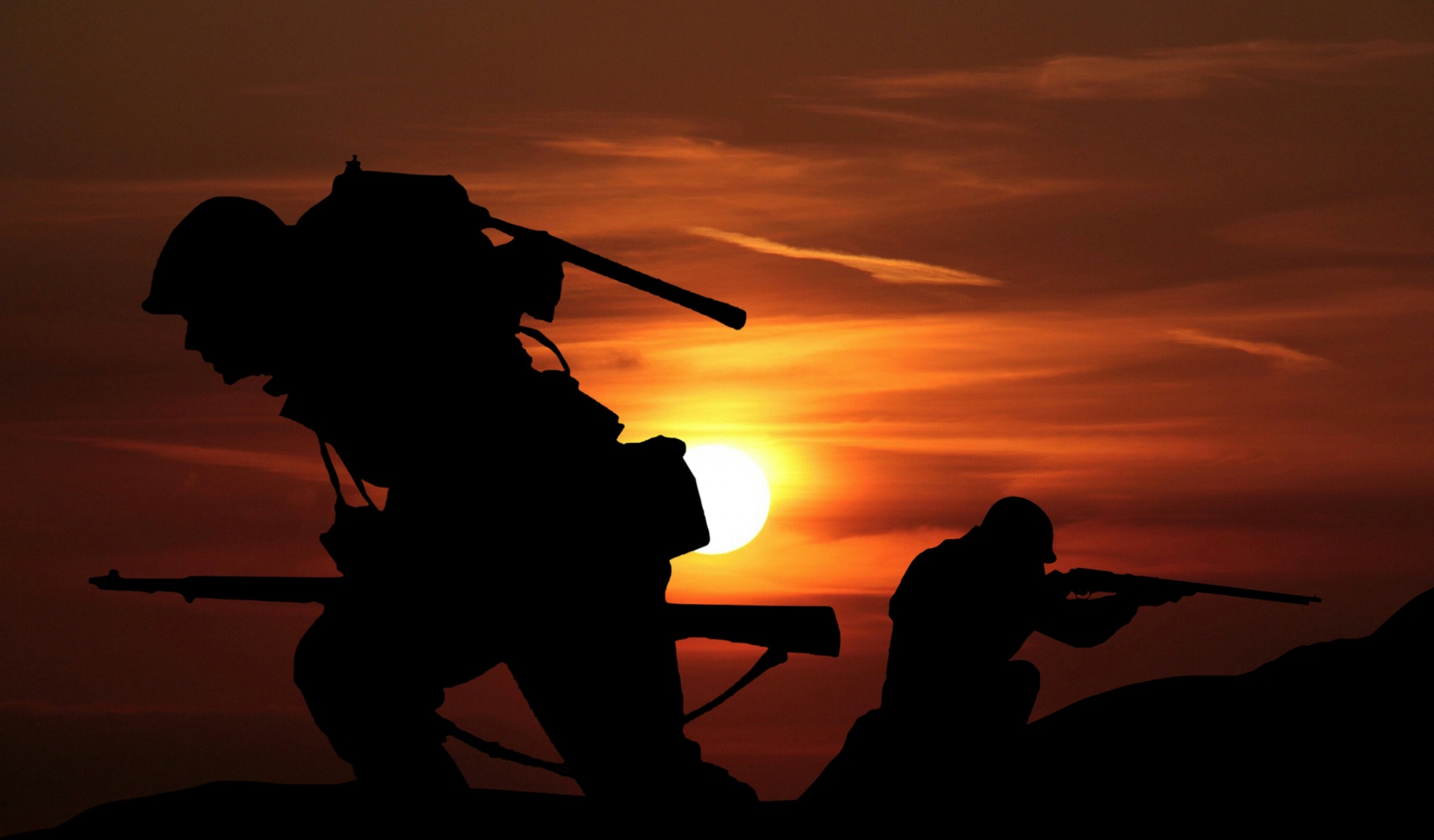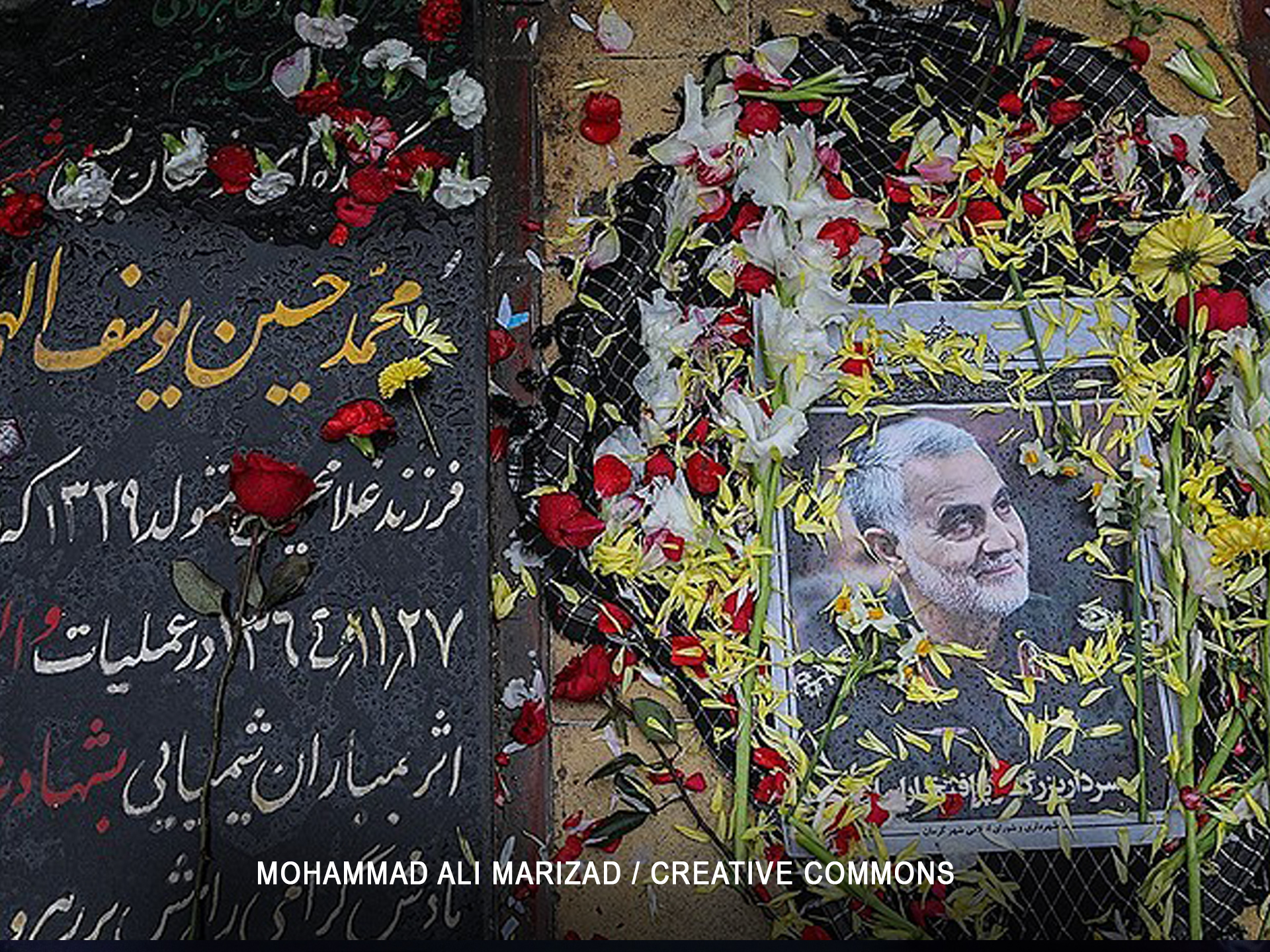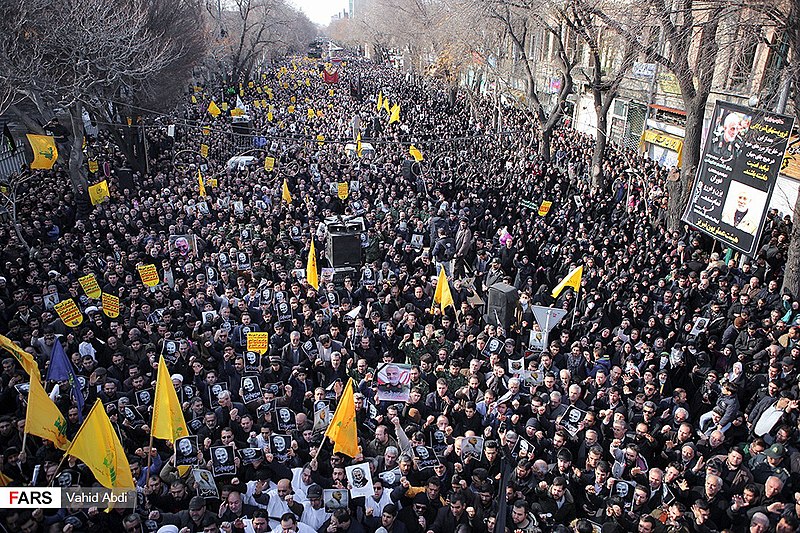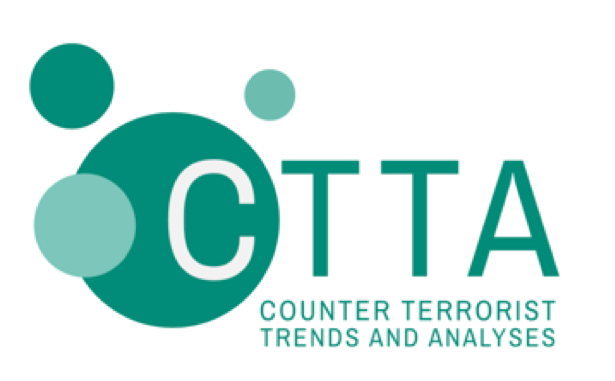
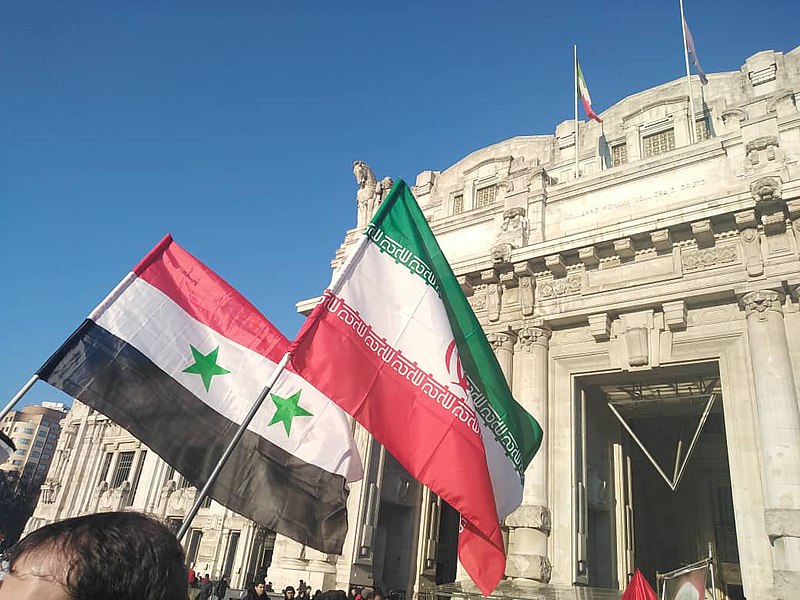
Raffaello Pantucci
While the geopolitical implications of General Qassim Soleimani’s killing have been well discussed, an understudied aspect is its impact on the jihadist terrorist milieu. The general assumption is that the act is either tangential to or undermines the fight against the Islamic State (IS), given Iran’s role in anti-IS operations on the ground in the Levant. However, it is not clear that either of these assumptions are true, or in what ways Soleimani’s death and its ... more
Raffaello Pantucci
While the geopolitical implications of General Qassim Soleimani’s killing have been well discussed, an understudied aspect is its impact on the jihadist terrorist milieu. The general assumption is that the act is either tangential to or undermines the fight against the Islamic State (IS), given Iran’s role in anti-IS operations on the ground in the Levant. However, it is not clear that either of these assumptions are true, or in what ways Soleimani’s death and its consequences might shape the future behaviour of jihadists.
The Current Milieu
On the surface, the global jihadist landscape remains dominated by two core factions – those aligned with al Qaeda (AQ) and those closer to IS. However, some jihadist factions continue to hedge against outwardly joining either side, and groups elsewhere around the world have pledged allegiance to IS, but with little evidence of a direct link or connection. At the ground level, it is sometimes not clear that individual adherents see the distinction in the same way that leadership cadres might, with arrests showing caches of radical material drawing from both pools. Similarly, in West Africa, there is growing evidence of cooperation between IS and AQ, though it is not clear if this is centrally mandated or coordinated.[1]
The growing importance of Africa in both groups’ global footprint is a more noticeable trend. For IS, that is represented through the growing influence and presence of IS-linked or inspired groups eager to brandish their connections – for example, there has been an increase in violence in the Sahel,[2] Nigeria[3] and Mozambique[4] linked to groups that have been releasing videos through IS channels. AQ also continues to be represented on the battlefield through their own affiliates, though they appear less vocal. The growing reported alignment between AQ and IS-linked groups in the Sahel is an interesting regional development – unique globally according to senior US military officials serving in the region[5] – whose larger significance is not yet clear.
Coherent Messaging
The exception in some ways for AQ is al Shabaab in East Africa, which has managed to demonstrate a constant capability and willingness to attempt ambitious attacks, while also maintaining a persistent public deference to AQ central.[6] IS has recently also taken to pushing a pan-regional narrative in direct competition to al Shabaab.[7] The link to AQ core is something that is reflected across the range of AQ affiliated groups who have in recent months shown a considerable degree of coherent messaging.[8]
IS in contrast continues to push to inspire wherever it can, with messages in support of its affiliates. While there is an equal degree of coherence in terms of style of messaging with AQ linked groups, it does not necessarily seem to fulfil the same role of seeking to bolster the centre and show higher levels of organisational coherence. In the wake of Abu Bakr al Baghdadi’s death, there appeared to be a rush from around the world of groups pledging allegiance to the new IS leader, with little clarity about how this affects the various groups or cells themselves.[9] Given the continued questions around IS’ new leader – with some in the security community even doubting his existence – IS certainly appears to be less concerned about global organisational coherence than AQ.[10]
Focus on Local Conflicts
At the same time, neither group appears at the moment in a position to launch a strategically significant strike against the West or out of their immediate areas of operation. It is possible such plots are being disrupted, but, regardless, the net result is a loss in visible effectiveness. In some parts of the world, local authority weakness, societal fissures or external tensions have created a context where the group, or a cell pledging loyalty to them, might launch a strike.[11] But evidence of centrally directed plots successfully launched by either group over the past year is lacking.
Rather, the groups appear to be focused on local conflicts in which they sometimes use the rhetoric of an international attack as a garb to shroud their attacks with greater meaning. For example, Al Qaeda in the Arab Peninsula’s (AQAP) most recent claim of responsibility of the Pensacola terrorist attack in Florida, showed little evidence of a connection beyond the group claiming the assailant as one of its own given his nationality as a Saudi.[12]
Iranian manipulation
Contrary to popular consensus that it is the sworn enemy of Sunni jihadists, Iran has shown itself to be a pragmatic actor in dealing with violent Sunni groups. This partly stems from a well-spring of early support from across the Muslim divide for the Iranian revolution. In the early days of the revolution in 1979, the overthrow of the Shah was treated as an event in the same light as the defeat of the Soviet Union in Afghanistan or the Siege of Mecca – whereby dedicated believers, armed only with guns, the Koran and the zeal of their beliefs, were able to overthrow (or hurt) long-standing apostate regimes. The focus was on Islam and anti-imperialism rather than Sunni-Shia divides.[13]
Support of Violent Extremists
While Iran has continued to maintain its rhetoric of permanent revolution – something alluded to within its constitution[14] – providing a logic that connected it with anti-imperialist movements around the world, for the most part, its links to violent groups have been highly pragmatic. For example, Iran has historically been supportive of Turkish Hezbollah, a Sunni group that has targeted Kurdish groups as well as Turkish authorities.[15] From an Iranian perspective, supporting such a group is partly motivated by a desire to control Iran’s own Kurdish separatist regions as well as providing them a card to play against Turkey.
Since the early days of the revolution, Iran has also supported Hamas against Israel.[16] Further, looking to Iran’s complicated border region with Pakistan, the long-standing Baluchi insurgency on both sides of the border, has generated repeated accusations by Pakistan that Tehran is providing support to some Baluchi elements, specifically the Baloch Raji Aajoi Saangar (BRAS),[17] a Sunni group that has targeted Pakistani security officials. Iran’s support appears tit-for-tat, but also an expression of concern against growing Saudi influence in Pakistan and particular investments in Baluchistan.
Iran’s relationship with the Taliban and AQ is also complicated. For years post-9/11, Iran hosted a number of senior AQ figures, alternatively jailing them and letting them run around under fairly loose supervision. This included senior figures like Saif al Adl and a number of Osama bin Laden’s close family. Abu Musab al Zarqawi, the subsequent founder of al Qaeda in Iraq (the precursor to IS) was allowed to pass through Iran as he fled Afghanistan for northern Iraq.[18] Iran appears to have seen the advantage in holding these individuals hostage to protect themselves against AQ. None of this, however, appears to have generated any trust between AQ and Iran, something evidenced by comments within Osama bin Laden’s correspondence found in Abbottabad.[19]
In 1998, when the Taliban overran Mazar-e-Sharif, they reportedly massacred a group of 11 Iranians (including 9 diplomats), pushing the two sides to the brink of war.[20] This soured relations such that following the post-9/11 invasion of Afghanistan by the United States, Tehran actively reached out to the US offering detailed maps of Taliban positions to aid in its attack plans.[21] However, as the American-Iranian relationship soured, the relationship between the Taliban and Tehran flourished. To the point that there was a Taliban Mashhad Shura formed, as well as Iranian support for Taliban groups in the north and west of Afghanistan.[22] Iran’s calculations here appear to be driven by a desire to keep its hand in play in Afghanistan as well as formulate another way to frustrate the US.
Pragmatic Relations
The key takeaway from all of this interaction with the Sunni jihadist world is that Tehran is highly pragmatic in its relations with them. While there are clear moments of conflict, Iran is seemingly willing to overlook them in order to advance broader strategic goals. This perspective will unlikely change following the removal of Soleimani. Unlike a terrorist group, where the leader is a figure around whom great mystique, ideology and personal linkages flow, Soleimani was simply (albeit very charismatic) the leader of an army – an organisation with a fixed hierarchy and goals, promotion and division of labour. The overall approach may be massaged by a leader, but ultimately the institution will have political perspectives that are dictated elsewhere. This will not change with the removal of a general.
Jihadists’ View of Iran
While Iran may have a highly pragmatic and agnostic view of Sunni jihadist groups, it is equally clear that the groups themselves have fairly firm views on Iran. The clearest expression of this is in the numerous postings that appeared on extremist social media channels in the wake of Soleimani’s death. While AQ did not make a formal statement, its affiliate on the ground in Syria, Hurras al Din, celebrated his demise.[23]
In contrast, IS was more open in its gloating, with a message in late January from its new spokesman, Abu Hamza al Qarashi, celebrating Soleimani’s death, describing him as a ‘Safavid apostate’ and calling on God to curse him and all who supported him.[24] The message followed an earlier one in IS’ newsletter al Naba, which hailed Soleimani’s death as a victory for the jihadist group.[25] There was also substantial condemnation amongst the jihadist community for Hamas’ stance on Soleimani’s death.[26]
None of this necessarily means jihadists would be averse to once again strike pragmatic deals with Iran if they advance broader strategic goals. They may shout anti-Iran rhetoric, and IS has in the past sought to accelerate its conflict with Iran with its June 2017 attack on the Parliament and Mausoleum of Ayatollah Khomeini, which followed its first ever Persian-language video.[27] But outside this attack, the group has done little in advance of its animosity towards the Islamic Republic (though Iran has claimed numerous foiled attacks).
Moreover, while both IS and AQ might see Shi’ite apostates as enemies, it is not clear how much they are dependent on this narrative to generate supporters and recruits. It is notable, for example, that in IS’ messages claiming the 2017 attack in Tehran, they sought to emphasise the ethnicities of the various attackers – highlighting their Baluchi and Ahvazi heritage; two minorities within Iran with strained relations with Tehran.[28] This suggests a narrative around the attack that attempts to manipulate local politics and tensions rather than rely solely on the simplistic Sunni-Shia divide.
Broader Geopolitics
All of these serves to illustrate the relative lack of importance to jihadist groups of Iran as a principal adversary. While Iran is seen as the heart of an alliance of apostates that is oppressing Sunni Muslims in the Middle East, the jihadist community still seems fixated on its enemies in the West and the regimes they are supporting around the world. The Shia may also be seen as adversaries, but arguably, they are not a principal focus of the jihadist community. Soleimani’s death is unlikely to change the calculations for both sides (Tehran and the jihadist community) a vast amount.
Continued Operations Across Middle East
This is not to say that in key theatres where AQ and IS operate, including in Iraq and Syria, Soleimani’s death will not have some effect. While physically decimated, IS is still estimated to carry out 60 attacks a month in Iraq alone targeting security forces and local rivals, as it seeks to regroup around an estimated 20,000 hardcore fighters across the Iraq-Syria theatre.[29] While concerned about IS’ regrowth in Syria, Iran will likely continue to focus their efforts through either their forces on the ground or Iraqi or Syrian proxies. The removal of Soleimani is not going to change this approach.
Rather, the greater impact will be on the broader US-Iran clash, where the escalation marked by the removal of Soleimani will give Iran and its proxies a greater sense of latitude to achieve their goals. This will concern Saudi Arabia, Iran’s principle adversary in the Gulf, who has been noticeably careful in official statements to downplay any gloating over Soleimani’s death.[30]
This perspective provides an interesting resonance to the broader question of the longer-term consequence of the strike for Sunni jihadist groups. For the US, this strike was part of a maximum pressure campaign against Iran that appears to be intended to topple the Tehran regime. It also came as the US continued to agitate to withdraw its troops from Iraq, Syria and Afghanistan. If US President Donald Trump is successful in his desire to pull US forces out of these Middle Eastern theatres, the resultant vacuum is one that will likely be filled by instability or Iran-Saudi tensions.
Filling the Security Vacuum
These tensions might express themselves through proxies like Sunni jihadist groups, but it is likely that these groups’ actions will be a combination of manipulation and individual agency. While IS and AQ (or other Sunni jihadist groups like the Taliban or those in Syria) might take advantage of the security vacuum that follows a US withdrawal to grow once again, those against them (including Iran) will fight back. This will give Iran’s foes an opportunity to provide support to their enemies’ enemy. So, as IS advances and the Iraqi and Syrian sides push back against them with Iranian support, it would be unsurprising if some support flows towards IS from Gulf backers.[31]
Similarly, in Afghanistan in the peace deal that was signed, the Taliban seemed to appear willing to sever their links with AQ.[32] While there has been much scepticism around this declaration and earlier intent by the Taliban to sever such links[33], the new agreement might provide a context in which Tehran could once again seek to play its cards with AQ to maintain some leverage against Taliban – a group with which they have deep historical enmity which may have only temporarily been put to one side. It might also be useful leverage in Iran’s broader conflict with the US – who by virtue of the latest agreement are (theoretically at least) now allied with the Taliban against AQ and IS.
Conclusion
The Sunni jihadist milieu is one that paints itself as ideologically pure. Yet it can be as brutally pragmatic as its state-based adversaries. In Tehran, the leadership also appears happy to cooperate with its perceived adversaries to ensure broader strategic goals. The death of General Soleimani will not alter such calculations, and rather may herald a period of greater confrontation between Iran and the world which will have the corollary effect of both weakening some of the alliances fighting against Sunni jihadist groups (for example in Iraq and Syria) while also increasing the willingness for Iran to use or manipulate proxies to launch attacks around the world.
Given the disruption or success of historical plots by Iranian linked networks in places as diverse as Thailand, India, Georgia, Cyprus, Argentina, Nigeria, Bulgaria, and the US, amongst others, the conflict against its enemies (Israel, the US and Saudi Arabia) from Tehran’s perspective has no borders. While a permanent alignment between Tehran and IS or AQ is unlikely, there is not likely to be much of a focused effort in eradicating either group by Tehran. In fact, it is possible and likely that Tehran will see IS, AQ and their various affiliates as useful potential assets to manipulate (if they are able) in their increasingly aggressive confrontation with the US.
Raffaello Pantucci is a Visiting Senior Fellow at the International Centre for Political Violence, Terrorism Research (ICPVTR), a constituent unit within the S. Rajaratnam School of International Studies (RSIS), Nanyang Technological University (NTU), Singapore. He can be contacted at [email protected].
References
[1] Eric Schmitt, “Terrorism Threat in West Africa Soars as US Weighs Troop Cuts,” New York Times, February 27, 2020, https://www.nytimes.com/2020/02/27/world/africa/terrorism-west-africa.html
[2] Jason Burke, “Sahel faces surge in violence from terror attacks,” Guardian, January 22, 2020, https://www.theguardian.com/world/2020/jan/22/sahel-faces-surge-in-violence-from-terror-attacks
[3] “Islamic State in Nigeria ‘beheads Christian hostages’,” BBC News, December 27, 2019, https://www.bbc.com/news/world-africa-50924266
[4] Peter Fabricius, “Is Islamic State taking charge of Mozambique’s jihadist insurgency,” Institute for Security Studies Today, January 10, 2020, https://issafrica.org/iss-today/is-islamic-state-taking-charge-of-mozambiques-jihadist-insurgency
[5] Adrian Blomfield and Will Brown, “British troops back on front line against jihadists as war on terror spreads to Africa,” Telegraph, March 1, 2020, https://www.telegraph.co.uk/news/2020/03/01/british-troops-back-front-line-against-jihadists-war-terror/
[6] The attack on the Dusit hotel in Nairobi in January 2019 (James Kahongeh, “How Dusit terror attack unfolded,” Daily Nation, January 15, 2020, https://www.nation.co.ke/news/How-Dusit-terror-attack-unfolded/1056-5418518-bp715yz/index.html) and the attack on US and Italian forces in September 2019 (Caleb Weiss, “Sahabaab strikes American, Italian forces in Somalia,” Long War Journal, September 30, 2019, https://www.longwarjournal.org/archives/2019/09/shabaab-strikes-american-italian-forces-in-somalia.php) show ambition, while their praise of AQAP’s Pensacola attack claim and the reference in the Dusit attack to being Zawahiri’s soldiers shows deference: “Blessing and Salutations for the Military Operation at the US navy base in Pensacola, Florida,” Al Kataib Media, February 2, 2020,https://twitter.com/Magdashi3/status/1224968922329505792
[7] “Islamic State video seeks recruits in East Africa,” BBC Monitoring, February 28, 2020, https://monitoring.bbc.co.uk/product/c201hy23 – it is also notable how al Shabaab is being reported as broadening its recruitment base, Nicholas Komu, “Al-Shabaab changes tack, targets jobless youths in Nyeri slums,” Daily Nation, March 1, 2020, https://www.nation.co.ke/news/Al-Shabaab-targets-youth-in-Nyeri-slums/1056-5474832-xagos9z/index.html
[8] This can be seen in some of the aforementioned incidents, but also see Caleb Weiss, “Al Qaeda’s general command praises recent Shabaab attacks,” Long War Journal, October 17, 2019, https://www.longwarjournal.org/archives/2019/10/al-qaeda-praises-recent-shabaab-attacks.php
[9] “Regional affiliates start pledging loyalty to new IS leader,” November 2, 2019, https://monitoring.bbc.co.uk/product/c2017fwd; Mina al-Lami, “Analysis: Decoding Islamic State’s allegiance videos,” BBC Monitoring, October 7, 2019, https://monitoring.bbc.co.uk/product/c20150sr
[10] Mina al-Lami, “Analysis: Ongoing uncertainties about identity of new Islamic State leader,” BBC Monitoring, January 24, 2020, https://monitoring.bbc.co.uk/product/c201eozr and Martin Chulov and Mohammed Rasool, ISIS founding member confirmed by spies as group’s new leader,” Guardian, January 20, 2020, https://www.theguardian.com/world/2020/jan/20/isis-leader-confirmed-amir-mohammed-abdul-rahman-al-mawli-al-salbi; there appears to be a debate about his identity which even a report in the Guardian reportedly sourced from numerous intelligence sources has not cleared up. IS’ recent statement referred to the new leader again, without showing him.
[11] The Easter 2019 attack in Sri Lanka is arguably an archetypal example of this.
[12] Thomas Joscelyn, “AQAP claims ‘full responsibility’ for shooting at Naval Air Station Pensacola,” Long War Journal, February 2, 2020, https://www.longwarjournal.org/archives/2020/02/aqap-claims-full-responsibility-for-shooting-at-naval-air-station-pensacola.php
[13] Emmanuel Sivan, “Sunni radicalism in the Middle East and the Iranian Revolution,” International Journal of Middle East Studies, vol.21, no.1, February 1989, pp.1-30
[14] “Chapter One: Tehran’s Strategic Intent,” Iran’s Networks of Influence in the Middle East, (IISS Strategic Dossier: London), November 2019, pp.11-38, https://www.iiss.org/publications/strategic-dossiers/iran-dossier/iran-19-03-ch-1-tehrans-strategic-intent
[15] Fatih Altayli, “Is Iran Supporting Turkish Hezbollah?,” Al Monitor, April 16, 2013, https://www.al-monitor.com/pulse/security/2013/04/turkey-iran-hezbollah-support.html; there is a live debate about the degree to which Iran is involved with the group. People close to the group deny (“Huda-Pars emergence,” The Economist, November 23, 2013) while Turkish sources tend to highlight links (Mustafa Cosar Unal and Tuncay Unal, “Recruitment or enlistment? Individual integration into the Turkish Hezbollah,” Turkish Studies, vol. 19, No.3, 2018, pp.327-362)
[16] Adnan Abu Amer, “The Hamas-Iran alliance remains and expands,” Middle East Monitor, January 14, 2019, https://www.middleeastmonitor.com/20190114-the-hamas-iran-alliance-remains-and-expands/ ; “Chapter One: Tehran’s Strategic Intent,” Iran’s Networks of Influence in the Middle East, (IISS Strategic Dossier: London), November 2019, pp.11-38, https://www.iiss.org/publications/strategic-dossiers/iran-dossier/iran-19-03-ch-1-tehrans-strategic-intent
[17] Shahaburddin Shahab, “Pakistan asks Iran to act on militants behind Baluchistan killings,” Reuters, April 20, 2019, https://www.reuters.com/article/us-pakistan-iran/pakistan-asks-iran-to-act-on-militants-behind-baluchistan-killings-idUSKCN1RW0EQ
[18] Adrian Levy and Catherine Scott-Clark, The Exile: The Flight of Osama bin Laden (UK: Bloomsbury), August 2017
[19] Nelly Lahoud, “Al-Qa’ida’s Contested Relationship with Iran: The View from Abbottabad,” New America Foundation, September 2018, https://s3.amazonaws.com/newamericadotorg/documents/Al-Qaidas_Contested_Relationship_with_Iran_2018-08-20_151707.pdf
[20] Douglas Jehl, “Iran holds Taliban responsible for 9 diplomats’ deaths,” New York Times, September 11, 1998, https://www.nytimes.com/1998/09/11/world/iran-holds-taliban-responsible-for-9-diplomats-deaths.html
[21] Dexter Filkins, “The Shadow Commander,” New Yorker, September 23, 2013, https://www.newyorker.com/magazine/2013/09/30/the-shadow-commander
[22] Javid Ahmad and Husain Haqqani, “What does Soleimani’s death mean for Afghanistan?,” The Hill, February 6, 2020, https://thehill.com/opinion/international/481884-what-does-soleimanis-death-mean-for-afghanistan
[23] “Syria-based jihadist group reportedly welcomes Soleimani’s death,” BBC Monitoring, January 12, 2020, https://monitoring.bbc.co.uk/product/c201dr8l
[24] “Text of IS spokesman’s message announcing new phase in jihad,” BBC Monitoring, January 27, 2020, https://monitoring.bbc.co.uk/product/c201f2pb
[25] “IS gloats at death of Soleimani in first comment on US-Iran crisis,” January 9, 2020, https://monitoring.bbc.co.uk/product/c201dfp7
[26] “Jihadist supporters condemn Hamas for mourning Soleimani,” BBC Monitoring, January 7, 2020, https://monitoring.bbc.co.uk/product/c201d54j
[27] Chris Zambelis, “Terror in Tehran: The Islamic State Goes to War with the Islamic Republic,” CTC Sentinel, vol.10, no.6, June/July 2017, https://ctc.usma.edu/terror-in-tehran-the-islamic-state-goes-to-war-with-the-islamic-republic/
[28] Ibid.
[29] Loveday Morris and Louisa Loveluck, “Killing of ISIS leader has not hurt group’s operations, says Iraqi Kurdish prime minister,” Washington Post, February 15, 2020, https://www.washingtonpost.com/world/killing-of-isis-leader-has-not-hurt-groups-operations-says-iraqi-kurdish-leader/2020/02/15/d3e7303a-4ff8-11ea-a4ab-9f389ce8ad30_story.html
[30] Yasmine Farouk, “What does the US killing of Soeimani mean for Saudi Arabia?,” Carnegie Endowment for International Peace Commentary, January 7, 2020, https://carnegieendowment.org/2020/01/07/what-does-u.s.-killing-of-soleimani-mean-for-saudi-arabia-pub-80722
[31] Martin Williams, “Factcheck Q&A: Is Saudi Arabia funding ISIS?,” Channel 4 News, June 7, 2017, https://www.channel4.com/news/factcheck/factcheck-qa-is-saudi-arabia-funding-isis
[32] “Agreement for Bringing Peace to Afghanistan between the Islamic Emirate of Afghanistan which is not recognized by the United States as a state and is known as the Taliban and the United States of America,” February 29, 2020, https://www.state.gov/wp-content/uploads/2020/02/Agreement-For-Bringing-Peace-to-Afghanistan-02.29.20.pdf
[33] This skepticism was well articulated by Thomas Joscelyn and Bill Roggio, “Trump’s Bad Deal with the Taliban,” Politico, March 18, 2019, https://www.politico.com/magazine/story/2019/03/18/donald-trump-afghanistan-zalmay-khalilzad-225815 and was particularly illustrated in the death of Asim Umar in Afghanistan in September 2019, “Asim Umar: Al-Qaeda’s South Asia chief ‘killed in Afghanistan’,” BBC News, October 8, 2019 https://www.bbc.com/news/world-asia-49970353



